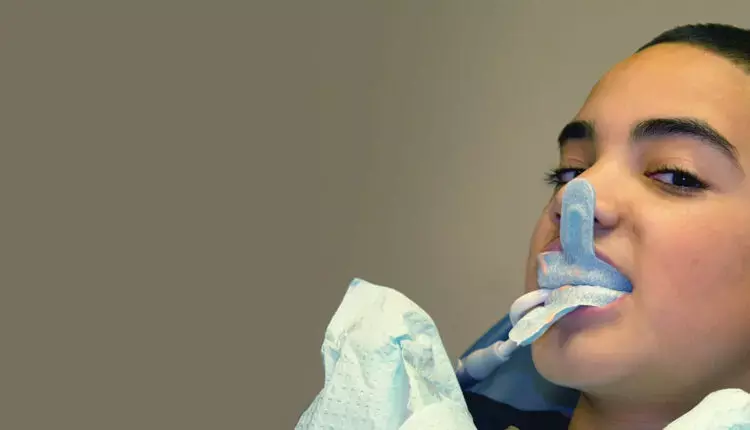- Home
- Medical news & Guidelines
- Anesthesiology
- Cardiology and CTVS
- Critical Care
- Dentistry
- Dermatology
- Diabetes and Endocrinology
- ENT
- Gastroenterology
- Medicine
- Nephrology
- Neurology
- Obstretics-Gynaecology
- Oncology
- Ophthalmology
- Orthopaedics
- Pediatrics-Neonatology
- Psychiatry
- Pulmonology
- Radiology
- Surgery
- Urology
- Laboratory Medicine
- Diet
- Nursing
- Paramedical
- Physiotherapy
- Health news
- Fact Check
- Bone Health Fact Check
- Brain Health Fact Check
- Cancer Related Fact Check
- Child Care Fact Check
- Dental and oral health fact check
- Diabetes and metabolic health fact check
- Diet and Nutrition Fact Check
- Eye and ENT Care Fact Check
- Fitness fact check
- Gut health fact check
- Heart health fact check
- Kidney health fact check
- Medical education fact check
- Men's health fact check
- Respiratory fact check
- Skin and hair care fact check
- Vaccine and Immunization fact check
- Women's health fact check
- AYUSH
- State News
- Andaman and Nicobar Islands
- Andhra Pradesh
- Arunachal Pradesh
- Assam
- Bihar
- Chandigarh
- Chattisgarh
- Dadra and Nagar Haveli
- Daman and Diu
- Delhi
- Goa
- Gujarat
- Haryana
- Himachal Pradesh
- Jammu & Kashmir
- Jharkhand
- Karnataka
- Kerala
- Ladakh
- Lakshadweep
- Madhya Pradesh
- Maharashtra
- Manipur
- Meghalaya
- Mizoram
- Nagaland
- Odisha
- Puducherry
- Punjab
- Rajasthan
- Sikkim
- Tamil Nadu
- Telangana
- Tripura
- Uttar Pradesh
- Uttrakhand
- West Bengal
- Medical Education
- Industry
Dental Caries increases risks of Osteoporosis with pathological fractures, BMC study

A recent study published in the journal of BMC Oral Health found dental caries to increase the risk of osteoporosis (OP) and postmenopausal OP with pathological fractures, indicating a possible teeth-bone axis connection. Patients with severe dental caries may benefit from proactive osteoporosis screening for early detection and management.
Dental caries (tooth decay) and periodontal (gum) disease are the 2 primary types of oral disorders, which are chronic and progressive in nature. The relationship between oral disease and osteoporosis has received constant interest due to a number of similar risk factors and biological processes. Chronic skeletal diseases, such as low bone mineral density (BMD), microarchitectural degradation, and an elevated risk of fracture, are characteristics of osteoporosis, much like dental disease.
According to recent research, there is growing evidence that osteoporosis, or a decline in bone mineral density, which may be a risk factor for less than ideal dental health. However, causal interpretation is limited by observational research's intrinsic confounding. Therefore, to quantify the causative effect of oral illnesses on osteoporosis, bone mineral density, and fracture risk, Gongzi Zhang and colleagues set out to do Mendelian randomization (MR) study.
This research identified 7 and 17 single-nucleotide polymorphisms (SNPs) for periodontitis and DMFS (the sum of Decayed, Missing, and Filled tooth Surfaces) as the instrumental factors for this study using summary-level GWAS meta-analysis data from the GLIDE collaboration. MR studies of these instruments were conducted on persons from the FinnGen consortium for OP, OP with pathological fracture, postmenopausal OP with pathological fracture, and site-specific fractures.
This was same for European adults for the relationship with BMD of the forearm, femoral neck, and lumbar spine. This study simultaneously evaluated the independent causative effects of PD and DMFS on various outcomes using single-variable Mendelian randomization (SVMR) and multivariable Mendelian randomization (MVMR). Inverse variance weighted (IVW) techniques were mostly used to produce the estimations. The weighted median, MR-egger, and leave-one-out test were among the sensitivity analyses.
The outcomes of this study found beneficial causative effect of DMFS on osteoporosis and postmenopausal OP with pathological fractures in MVMR after controlling for PD. Yet, the single-variable Mendelian randomization (SVMR) study did not reveal these causal linkages. Several sensitivity studies showed that the causal relationships were strong. Overall, dental caries suggests the presence of a teeth-bone axis by causally increasing the incidence of OP and postmenopausal OP with pathological fracture.
Source:
Zhang, G., Zheng, J., Zhou, Y., Zhou, M., Zhang, J., Liu, Y., Geng, Y., Wang, W., Xin, M., Yang, B., Zhang, L., & Huang, L. (2025). From teeth to bone: dental caries has causal effects on osteoporosis and osteoporotic fracture. BMC Oral Health, 25(1), 340. https://doi.org/10.1186/s12903-025-05735-7
Neuroscience Masters graduate
Jacinthlyn Sylvia, a Neuroscience Master's graduate from Chennai has worked extensively in deciphering the neurobiology of cognition and motor control in aging. She also has spread-out exposure to Neurosurgery from her Bachelor’s. She is currently involved in active Neuro-Oncology research. She is an upcoming neuroscientist with a fiery passion for writing. Her news cover at Medical Dialogues feature recent discoveries and updates from the healthcare and biomedical research fields. She can be reached at editorial@medicaldialogues.in
Dr Kamal Kant Kohli-MBBS, DTCD- a chest specialist with more than 30 years of practice and a flair for writing clinical articles, Dr Kamal Kant Kohli joined Medical Dialogues as a Chief Editor of Medical News. Besides writing articles, as an editor, he proofreads and verifies all the medical content published on Medical Dialogues including those coming from journals, studies,medical conferences,guidelines etc. Email: drkohli@medicaldialogues.in. Contact no. 011-43720751


